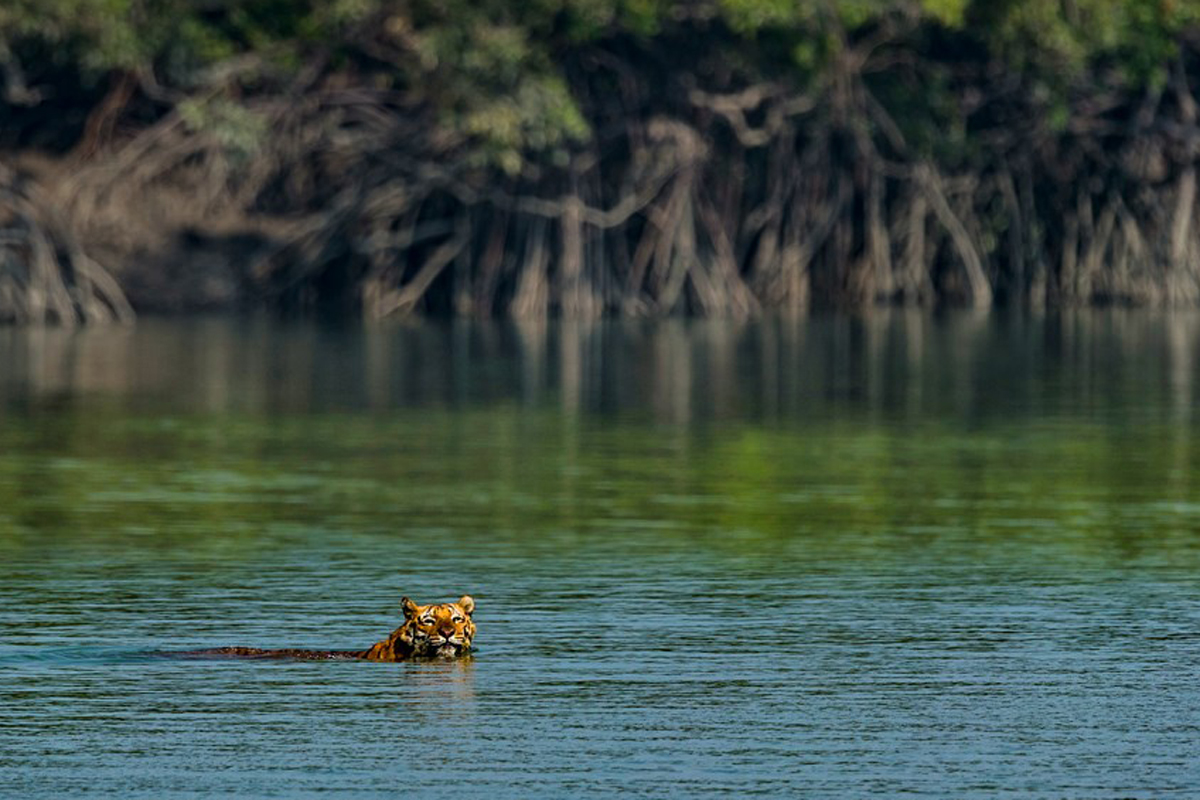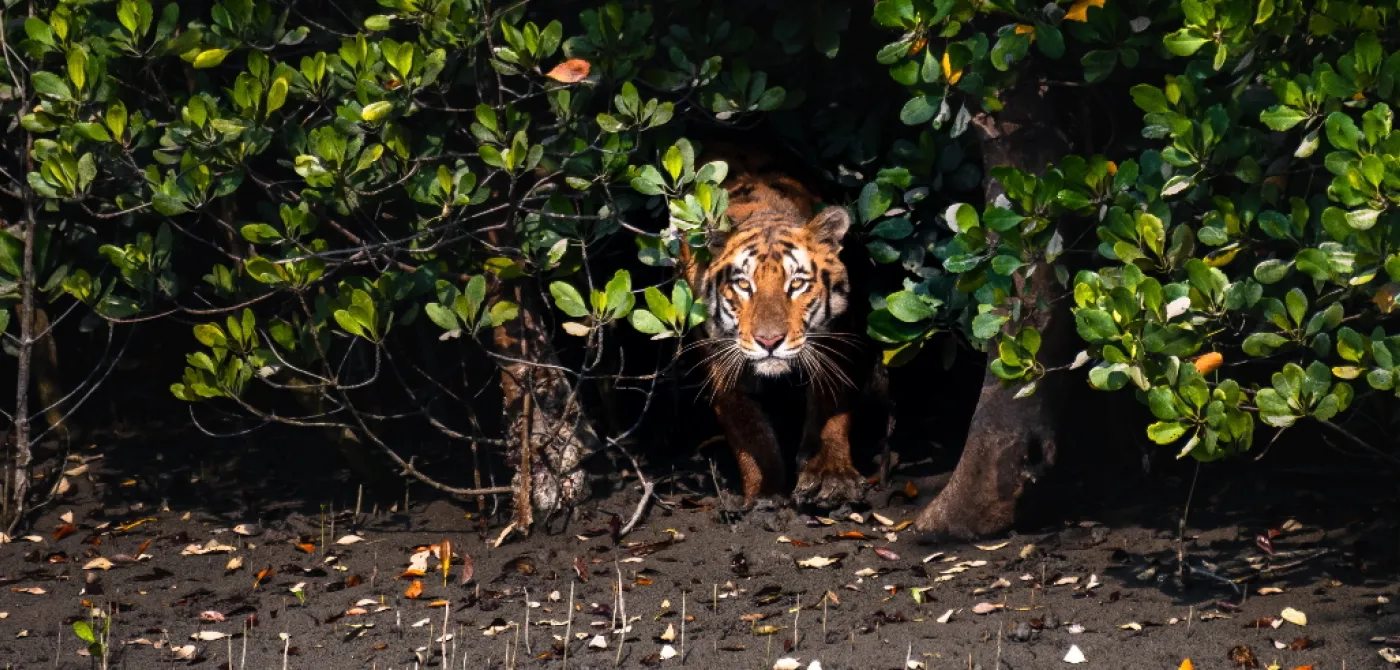- 1 Day Sundarban Tour
Pricing:
- ₹2799 per adult
- ₹1399 for children aged 4-8 years
- Free for children aged 1-4 years (under 48 months)
Facilities Included:
- Welcome Drink:
- Transportation: [Pick + Drop]
- Breakfast:
- Boat Safari:
- Lunch:
- Sightseeing:
- Guide Assistance:
- Snacks and Tea:
- Safety Measures:
- 1 Night 2 Days Sundarban Tour
Pricing:
- ₹4500 per adult (Non-AC room)
- ₹5000 per adult (AC room)
- ₹2250 for children aged 4-8 years
- Free for children aged 1-4 years (under 48 months)
Facilities Included:
- Welcome Drink
- Meals: All Times
- Boat Safari
- Accommodation: AC/ Non Ac
- Cultural Program:
- Visit Watchtowers and Local Attractions
- Safety
- Guided Tour
- Tea/Coffee Breaks
- 2 Night 3 Days Sundarban Tour
Pricing:
- ₹5500 per adult (Non-AC room)
- ₹6500 per adult (AC room)
- ₹2750 for children aged 4-8 years
- Free for children aged 1-4 years (under 48 months)
Facilities Included:
- Welcome Drink
- Meals: (breakfast, lunch, evening snacks, and dinner)
- Extended Boat Safaris: Multiple guided boat safaris
- Accommodation: in AC or non-AC rooms,
- Cultural Program:
- Visits to Key Attractions:
- Expert Guide:
- Tea/Coffee Breaks:

Sundarban 3 Days 2 Nights Package
Immerse in the wild beauty of Sundarbans with our 3 Days, 2 Nights adventure!

Book Sundarban 3 Days 2 Nights
Immerse in the wild beauty of Sundarbans with our 3 Days, 2 Nights adventure!
- 2 Night 3 Days Sundarban Boat Tour
Pricing:
- ₹5500 per adult (Non-AC room)
- ₹6500 per adult (AC room)
- ₹2750 for children aged 4-8 years
- Free for children aged 1-4 years (under 48 months)
Facilities Included:
- All Meals:
- Guided Boat Safaris:
- 2-Night Accommodation: Stay on the boat in comfortable AC or non-AC rooms.
- Cultural Performances:
- Attractions:
- Safety & Security:

Boat Sundarban 3 Days 2 Nights Package
Sail into the wild with our 3 Days, 2 Nights Sundarban Boat Adventure!

Sundarban 3 Days 2 Nights Package
Explore the untamed beauty of Sundarbans with a thrilling 3 Days, 2 Nights boat tour!
History of Sundarbans Tiger Reserve: How It Became a Global Icon

Introduction
History of Sundarbans Tiger Reserve: The Sundarbans Tiger Reserve, a UNESCO World Heritage Site, is one of the most renowned wildlife sanctuaries in the world. Spanning across India and Bangladesh, this unique ecosystem has played a vital role in tiger conservation and biodiversity protection. But how did the Sundarbans Tiger Reserve become a global icon? Let’s explore its fascinating history, key milestones, and its significance in today’s conservation efforts.

The Early Days: A Natural Wonder
The Sundarbans, derived from the name of the ‘Sundari’ tree, has long been a dense mangrove forest supporting rich wildlife. Historically, this area was home to the Royal Bengal Tiger, estuarine crocodiles, and diverse bird species.
- During the British colonial era, the Sundarbans was viewed mainly as a resource for timber and natural wealth.
- In 1878, the British declared parts of the forest as ‘Protected Forests’ under the Indian Forest Act.
- Early hunting practices and deforestation posed a significant threat to wildlife, particularly the tiger population.
Read More:

Establishment of the Sundarbans Tiger Reserve
1. The Wildlife Protection Act, 1972
The Indian government took significant steps toward conservation with the Wildlife Protection Act of 1972, which led to the foundation of several tiger reserves under Project Tiger.
2. Declaration as a Tiger Reserve (1973)
In 1973, the Sundarbans was officially designated as a Tiger Reserve, making it one of the earliest reserves under Project Tiger. This move aimed to protect the dwindling Bengal tiger population and ensure sustainable wildlife management.
3. Recognition as a National Park (1984)
By 1984, a core part of the Sundarbans was elevated to national park status, reinforcing its significance in India’s conservation framework.
4. UNESCO World Heritage Site (1987)
Recognizing its ecological importance, UNESCO listed the Sundarbans National Park as a World Heritage Site in 1987, boosting its international status.
How the Sundarbans Became a Global Conservation Icon
1. A Natural Habitat for the Bengal Tiger
The Sundarbans Tiger Reserve is the largest single block of tidal halophytic mangrove forests, providing a natural habitat for the Bengal tiger. Unlike other tigers, Sundarbans tigers have adapted to swim long distances in search of food, making them unique among big cats.

2. Pioneering Conservation Strategies
Several innovative conservation strategies have been implemented, including:
- Mangrove afforestation projects to combat climate change.
- Anti-poaching measures with local community involvement.
- Eco-tourism initiatives to generate sustainable revenue while promoting conservation.
3. International Collaboration and Research
Global organizations, including WWF and IUCN, collaborate with Indian authorities to monitor tiger populations and address climate change impacts.
4. A Model for Eco-Tourism and Sustainable Conservation
The Sundarbans has become a model for eco-tourism. Visitors can explore the reserve through guided boat safaris, raising awareness about the importance of tiger conservation.

Challenges Facing the Sundarbans Tiger Reserve
Despite its success, the Sundarbans Tiger Reserve faces several threats, including:
- Climate Change & Rising Sea Levels – A major concern as the low-lying Sundarbans are vulnerable to flooding.
- Human-Wildlife Conflict – Encroachment into tiger territory leads to human-tiger conflicts.
- Illegal Poaching & Deforestation – Despite strict laws, poaching and habitat destruction persist.
- Pollution & Industrialization – Increased human activity threatens the delicate ecosystem.
What Can Be Done to Protect the Sundarbans Tiger Reserve?
1. Stronger Conservation Policies
Governments need to implement stricter anti-poaching laws and expand protected areas.
2. Sustainable Tourism Development
Responsible tourism is key to maintaining the Sundarbans while generating funds for conservation.

3. Community Involvement & Education
Educating local communities about conservation efforts and involving them in sustainable practices is vital for long-term success.
Experience the Sundarbans Firsthand!
Want to witness the majestic Bengal tigers of the Sundarbans? Plan an eco-tourism experience today!
Book your Sundarban tour now with:
Conclusion
The Sundarbans Tiger Reserve has evolved from a natural wilderness to a global conservation icon. Its remarkable journey showcases the power of sustainable conservation and the ongoing efforts to protect Bengal tigers. As climate change and human activities threaten this ecosystem, it’s crucial to support conservation initiatives, visit responsibly, and spread awareness.
Join us in preserving the legacy of the Sundarbans – a true global icon of wildlife conservation!








